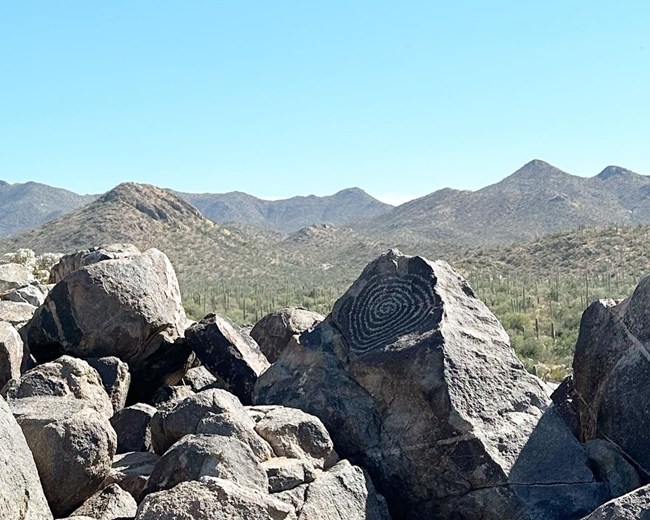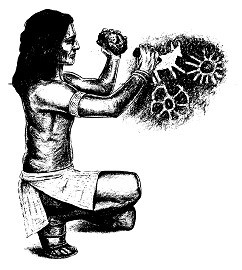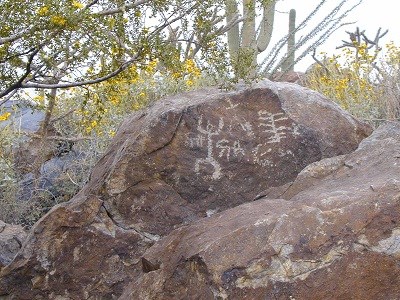
NPS photo Etched in StoneRock art is found throughout the world. These images afford us rare opportunities to look into the past and provide us with insight into the lives of ancient peoples. The southwestern United States is rich in this art, and Saguaro National Park has many rock art sites. Most southwestern rock art predates written history and had its origins hundreds (and perhaps thousands) of years ago among the people of this region.

PetroglyphsPetroglyphs are designs pecked, incised or abraded onto rock surfaces. Petroglyph artists preferred patinated surfaces. Patina is a natural geological process that results in a dark coating on rock surfaces. It is also known as desert varnish. Chipping away on a patinated surface exposes the lighter color beneath. Different methods were used to create the petroglyphs. Pecking was the most common method used and was accomplished by a direct blow with a hammerstone or indirectly by striking a stone held against the rock face with a second stone or hammerstone. Another method was scratching or incising designs onto the rock surface with a sharp-edged stone. Abrading was sometimes used to grind the surface of the rock in the interior of a pecked petroglyph design. 
NPS photo DesignsBoth representational and abstract designs can be seen in Hohokam petroglyphs. Abstract designs include geometric forms and curvilinear lines; spirals are quite common. Representational designs depict life forms in a stylized manner. Human forms, mountain sheep, deer, reptiles and plant designs are found throughout Tucson and the surrounding mountains. Most rock art can be classified into five general categories: basic geometric elements, geometric designs, botanical designs, zoomorphic designs, and anthropomorphic designs 
NPS photo What Does it Mean?Some possible purposes of rock art include:

NPS photo How Old Are They?Rock art is difficult to date. Clues include the condition of the image, the subject of the image or a comparison of the image with similar designs found on pottery or other well dated artifacts. New techniques are continually being developed to assist in dating this art form. Preserve the PetroglyphsRock art is irreplaceable. Please assist us in preserving this part of the rich, cultural landscape of Saguaro National Park. Treat all rock art with respect. Do not touch rock art as the oils in your skin can damage them. Take nothing but photographs, and leave nothing but footprints. |
Last updated: May 5, 2025
